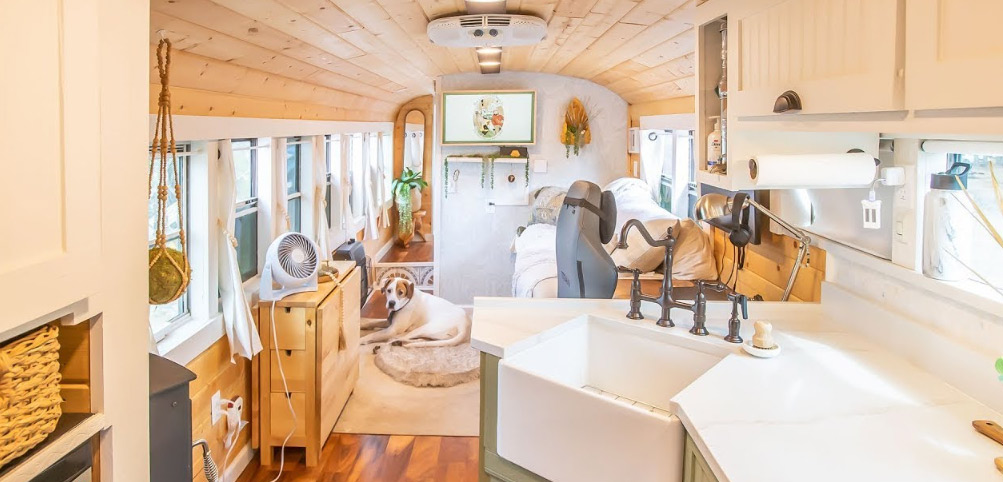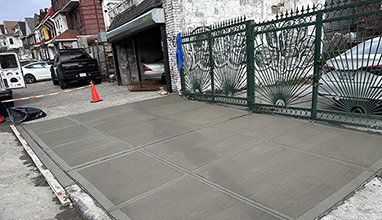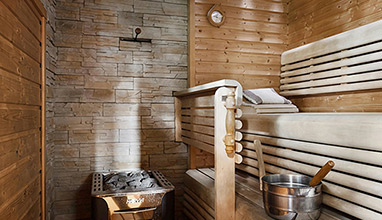The New Wave of Fashion Stylish Bus Renovation
An old bus sitting unused might seem like an unlikely candidate for a luxury makeover. Yet, a growing movement is transforming these workhorses of public transit into bespoke spaces, from chic mobile homes to high-end corporate shuttles. The stylish renovation of used buses interiors is more than just a trend; it's a creative and sustainable solution that redefines travel, living, and business. This in-depth article explores this fascinating world, covering everything from design considerations to the unique challenges of specific models like Yutong buses.

We will delve into the rising popularity of bus conversions and their diverse applications. You will learn about the critical factors to consider when planning your renovation, including layout, materials, and essential systems. We'll also examine the specific characteristics of popular coach and travel buses, highlight inspiring case studies, and discuss the significant environmental and economic advantages of giving these vehicles a second life.
The Growing Trend of Bus Renovations
The concept of converting buses isn't new, but its recent surge in popularity is driven by a convergence of cultural shifts and practical needs. People are seeking more flexible lifestyles, unique travel experiences, and sustainable living solutions. A renovated bus interior offers a compelling answer to all three.
From "Skoolies" to Corporate Cruisers
The applications for a stylish bus renovation are incredibly diverse, catering to a wide range of needs and budgets.
- Mobile Homes (Skoolies & Coach Conversions): Perhaps the most well-known application is the "skoolie" (a converted school bus) or a full-sized coach conversion. These projects transform buses into fully functional homes on wheels, complete with kitchens, bathrooms, bedrooms, and living areas. They appeal to digital nomads, retirees, and families who crave freedom and adventure without sacrificing the comforts of home.
- Luxury Travel & Tour Vehicles: Tour operators and private individuals are upgrading travel and coach buses into luxurious transport. Imagine plush leather seating, onboard entertainment systems, full-service galleys, and even sleeping berths. These renovations elevate group travel from a necessity to an exclusive experience.
- Corporate and VIP Shuttles: Businesses are recognizing the value of a custom-branded mobile environment. Renovated buses serve as mobile offices, marketing showrooms, and VIP shuttles for transporting clients or executives. A well-designed interior can function as a powerful branding tool, offering comfort and connectivity on the go.
- Specialty Mobile Businesses: Entrepreneurs are converting buses into everything from mobile coffee shops and retail boutiques to pop-up barbershops and art galleries. A bus provides a unique, eye-catching storefront that can travel directly to customers, offering a distinct advantage over traditional brick-and-mortar locations.
Key Considerations for Renovating Bus Interiors
A successful bus renovation is a complex project that requires careful planning. It's a blend of automotive mechanics, residential construction, and interior design. Overlooking key details can lead to costly mistakes and a finished product that fails to meet your vision.
Design and Layout Planning
Before you touch a single seat, you need a solid plan. The layout is the foundation of your entire renovation.
- Define Your Purpose: How will you use the bus? The needs of a full-time family of four are vastly different from those of a weekend traveler or a corporate shuttle. Your primary use case will dictate every decision, from the number of seats to the size of the water tanks.
- Space Optimization: A bus is a long, narrow space. Smart design is crucial. Use multi-functional furniture, like a dinette that converts into a bed or benches with built-in storage. Consider vertical space for shelving and cabinets.
- Weight Distribution: This is a critical safety consideration. Heavy items like water tanks, batteries, and appliances must be distributed evenly to maintain the bus's balance and handling. Place heavy components as low and as close to the axles as possible.
- Flow and Functionality: Walk through your virtual layout. Can you move easily from the kitchen to the bedroom? Is the bathroom accessible without disturbing others? A logical flow makes a small space feel much larger and more livable.
Materials and Finishes
The materials you choose impact the bus's weight, durability, and overall aesthetic.
- Flooring: Options range from durable and waterproof Luxury Vinyl Plank (LVP) to lightweight cork or classic hardwood. Consider the material's weight, ease of installation, and resistance to temperature fluctuations.
- Walls and Ceiling: Thin plywood or specialty lightweight paneling are popular choices. Tongue-and-groove wood planks can create a beautiful, rustic look for the ceiling but add significant weight.
- Insulation: This is non-negotiable. Proper insulation regulates interior temperature, reduces road noise, and prevents condensation. Common choices include spray foam, rigid foam board, and mineral wool. Each has different properties and installation requirements.
- Cabinetry: Custom-built cabinets made from lightweight plywood are often the best solution to maximize storage in odd-shaped spaces. Using secure latches is essential to keep doors and drawers closed while the bus is in motion.
Essential Systems and Functionality
A renovated bus interior is more than just pretty surfaces. The underlying systems are what make it functional.
- Electrical System: This is one of the most complex parts of a conversion. You'll need to decide between a 12V DC system (like an RV) and a 120V AC system (like a house), or a combination of both. Solar panels, lithium batteries, and an inverter are standard components for off-grid power.
- Plumbing System: This includes freshwater tanks, a water pump, a water heater, and grey/black water holding tanks. PEX tubing is a popular choice for plumbing lines due to its flexibility and durability.
- HVAC (Heating, Ventilation, and Air Conditioning): Staying comfortable is key. Options include diesel heaters, small wood stoves (with proper safety precautions), and rooftop air conditioning units. Good ventilation, including fans and operable windows, is vital to control moisture.
Renovating Yutong Buses and Other Popular Brands
While the general principles of renovation apply to all buses, different models present unique opportunities and challenges. Coach buses, like those from Yutong, MCI, and Prevost, are a popular choice for high-end conversions due to their robust construction and features.
The Yutong Bus Advantage
Yutong is a China bus brand and their used coaches are increasingly sought after for renovations.
- Structural Integrity: Yutong buses are built on a durable chassis designed for millions of miles of commercial service. Their monocoque construction provides a strong, rigid frame that is ideal for conversion.
- Underfloor Storage ("Bays"): One of the biggest advantages of a coach bus is the massive storage space underneath the passenger floor. These bays are perfect for housing water tanks, battery banks, generators, and outdoor gear, keeping the main living area uncluttered.
- Existing Systems: Many used coach buses come with pre-existing HVAC systems, air-ride suspension for a smooth ride, and powerful diesel engines. While these systems may need servicing, they provide a great starting point compared to a bare-bones school bus.
Challenges of Renovating Coach Buses
Despite the benefits, renovating a coach like a Yutong or a travel bus comes with specific hurdles.
- Complexity: The systems on a coach bus are far more complex than those on a school bus. The air brake system, sophisticated electrical wiring, and integrated HVAC require specialized knowledge to modify or repair.
- Higher Initial Cost: A used coach bus is significantly more expensive than a decommissioned school bus. The initial investment is higher, though the build quality often justifies the cost.
- Demolition Work: Removing dozens of heavy commercial seats, overhead luggage racks, and existing flooring is a labor-intensive process. The interiors are built for durability, not easy disassembly.
Case Studies: Inspiring Bus Renovations
Real-world examples showcase the incredible potential of a stylish bus renovation.
Case Study 1: The Luxury Family Tourer
A family in California purchased a used Prevost coach bus with the goal of traveling the country full-time. They gutted the interior and designed a layout with a private master bedroom at the rear, bunk beds for their two children, a full bathroom with a tiled shower, and a spacious kitchen with a residential-sized refrigerator. They used lightweight materials and high-end finishes, including quartz countertops and custom walnut cabinetry. The underfloor bays house a large solar power system, allowing them to live off-grid for weeks at a time. The result is a mobile home that rivals a luxury apartment in both style and function.
Case Study 2: The Mobile Corporate Showroom
A tech company wanted a unique way to engage with clients at trade shows and corporate events. They acquired a used Yutong bus and converted it into a mobile showroom. The interior features several interactive product demo stations, a comfortable lounge area for meetings, a coffee bar, and high-speed satellite internet. The exterior was wrapped in the company's branding, turning the bus into a rolling billboard. This stylish renovation provides a memorable and immersive brand experience that sets them apart from competitors.
The Economic and Environmental Benefits
Beyond the aesthetics and functionality, repurposing a used bus is a smart and responsible choice.
Economic Advantages
Purchasing and renovating a used bus can be a cost-effective alternative to buying a new, traditionally manufactured RV or mobile home. While high-end conversions can be expensive, a DIY project allows for full control over the budget. You can choose materials and appliances that fit your financial constraints. Furthermore, the longevity and durability of a commercial bus chassis mean it will hold its value better than many standard RVs.
Environmental Impact
Giving a used bus a second life is an act of upcycling on a massive scale. Instead of being sent to a scrapyard, the vehicle's sturdy frame, engine, and core components are reused. This saves an enormous amount of energy and raw materials that would be required to manufacture a new vehicle from scratch. By incorporating sustainable features like solar power and composting toilets, owners can further reduce their environmental footprint, creating a living space that is both stylish and eco-conscious.
Your Journey to a Renovated Bus
The stylish renovation of used bus interiors is a testament to creativity, resourcefulness, and a desire for a different way of living and working. Whether it's a Yutong coach becoming a luxury motorhome or a city travel bus transforming into a mobile boutique, these projects breathe new life into old vehicles. The journey is challenging, demanding careful planning, hard work, and a willingness to learn. However, the reward is a truly unique, personalized space that offers unparalleled freedom and a deep sense of accomplishment.
If you are considering your own bus conversion, start with thorough research and a clear vision. Connect with the vibrant online community of bus converters for advice and inspiration. With the right approach, you can turn a humble used bus into an extraordinary home, business, or travel vehicle that is perfectly tailored to your dreams.
Hits: 10338 | Leave a comment
Tags:Bus Renovation

















